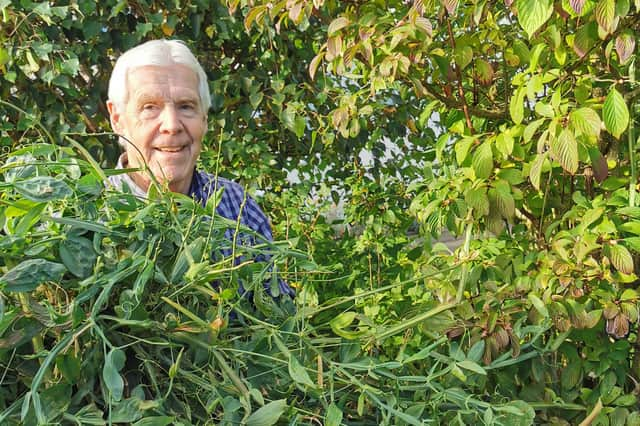Don’t miss the best recycling opportunity


Opportunities remain to salvage stem cuttings from certain shrubs and other perennials, also to divide large clumps of the latter, thus increasing our plant stock. But that’s not all these plants about to enter dormancy have to offer. Don’t miss out on the best recycling opportunity of all. Gather the spent growth, chop it up and feed it into your composting unit.
Left to nature, all the dead stems and leaves would fall to ground, become absorbed in the soil eventually and positively enrich it. However, that’s an untidy, time-consuming process that we can easily by-pass through composting, the simplest form of which is to dump all garden waste in an unsightly heap and wait six to 12 months until it decomposes. The aerobic micro-organisms that transform recognisable plant waste into a special medium for soil enrichment or composts, require air. So, a heap of garden waste benefits from turning over occasionally to keep them active.
Advertisement
Hide AdAdvertisement
Hide AdBut we can do better than that. Build your own composting compound from wooden pallets or buy one ready made with gaps for air entry. Stand it on a soil base, where possible, to encourage worms or introduce them to the system. Such open facilities are prone to vermin entry but surrounding it with fine wire mesh is a useful preventive. Laying a piece of old carpet material over the open top offers a duvet effect and absorbs some of the rain.
I have a completely enclosed polypropylene Hotbin which has a capacity of 200 litres and maintains warmth through winter. It processes garden waste in weeks rather than months. Check it out online.
Successful composting comes when warmth, a balance of green and brown plant waste, and air, are brought together. This encourages the work of beneficial micro-organisms.
Choose a sunny site for the facility if possible because the decomposition process is more active there than in a cool, shady position. Brown plant materials such as shredded bark, twigs, cardboard and paper, have a high carbon content and need green items (vegetable leaves, uncooked kitchen waste, grass, etc) to kickstart the system. If there are too many browns, the process is slow, too much green material encourages anaerobic bacteria and a gooey mess. Two measures of brown to one of green works best.
WHAT NOT TO PUT ON YOUR COMPOST HEAP
Advertisement
Hide AdAdvertisement
Hide Ad“What must I not put in my composting facility?” This is a frequently asked question. In essence, certain materials should be left out because they will not decompose. Tins, plastic and glass are obvious examples. Egg shells will fail to break down and vanish, but the resultant compost can benefit from their calcium content. Scraps of cooked foods consigned to an open composting system will attract unwelcome rodents. They can however be added to enclosed units such as hot bins.
In home-based systems I’d avoid composting the roots and seeds of troublesome perennial weeds such as ground elder and couch grass, also any diseased plants, unless you’re convinced sufficient warmth is being generated to achieve total decomposition. Avoid adding dog and cat litter, but that of herbivorous pets, rabbits, guinea pigs, hamsters or gerbils, is okay.
Tempting though it is to add lots of lawn mowings to accelerate the process, this can backfire. As they collapse and condense into an airless mass detrimental anaerobic bacteria thrive, causing rot and an offensive smell.
Composted material is ready for use when it has changed from recognisable plant material into a brown soil-like substance with crumbly texture and an earthy fragrance. Almost any plant in the garden or greenhouse will benefit from it.
Advertisement
Hide AdAdvertisement
Hide AdMy favourite medium for rooting cuttings comprises composted waste passed through a sieve, added to perlite in equal parts. Already rich in nutrients, it’ s also ideal for sowing or potting plants. I use it widely in the garden as mulch around fruit trees and bushes, also forked lightly into the vegetable and flower beds. An excellent soil conditioner, there is something very satisfying about the repetitive cycle from which it is born.